
FolkCostume&Embroidery Costume of Ynys Mon, or Anglesey, and North Cymru or Wales Traditional
The Victorians may have curated a specific version of Welsh dress and cemented the idea of it as ' Welsh National Costume ' but the clothes themselves, including the hat, had indeed been around for much longer. Before the Welsh Hat was Welsh, it was just a hat. High crowned styled hats made of felt or beaver fur were once popular across.

YOUNG GIRL WEARING TRADITIONAL WELSH NATIONAL COSTUME Stock Photo Alamy
Welsh national costume St David's day is a great day for all Welsh folk to celebrate national heritage and tradition as well as honouring the patron Saint of Wales. National dress is a big part of the celebration, so expect to see lots of little Welsh ladies and gentlemen skipping their way to school on this first day of March.

The Tall StovepipeStyle Hat An Indispensable Part of Welsh Women in National Costume From the
The created a national costume from clothing worn by women in the countryside. This image has ensured the survival of many elements of real Welsh dress. Early sources of information In order to discover the true nature of rural dress within Wales during the 18th and 19th centuries, it is necessary to investigate sources from the time.
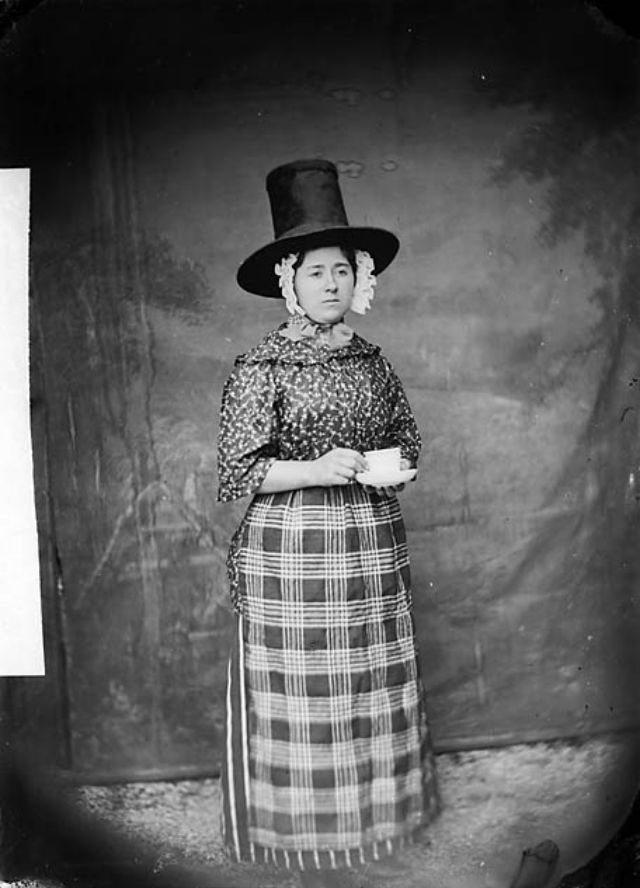
The Tall StovepipeStyle Hat An Indispensable Part of Welsh Women in National Costume From the
© Wales Guidebook The costume is no longer worn today on a daily basis, however, it has become a national symbol of Wales and is often worn by young girls during celebrations such as St David's Day or by performers at the National Eisteddfod. The costume consists of a bedgown made from wool, worn over a corset.
Traditional Mens Welsh Clothing Gay Eat Ass
Stovepipe Hats and Bedgowns: An Exploration of the Welsh National Costume. 1 March 2021, by Gemma Esvelt In this week's blog, in honour of St. David's Day, CS Ambassador Gemma Esvelt explores Welsh national costume.
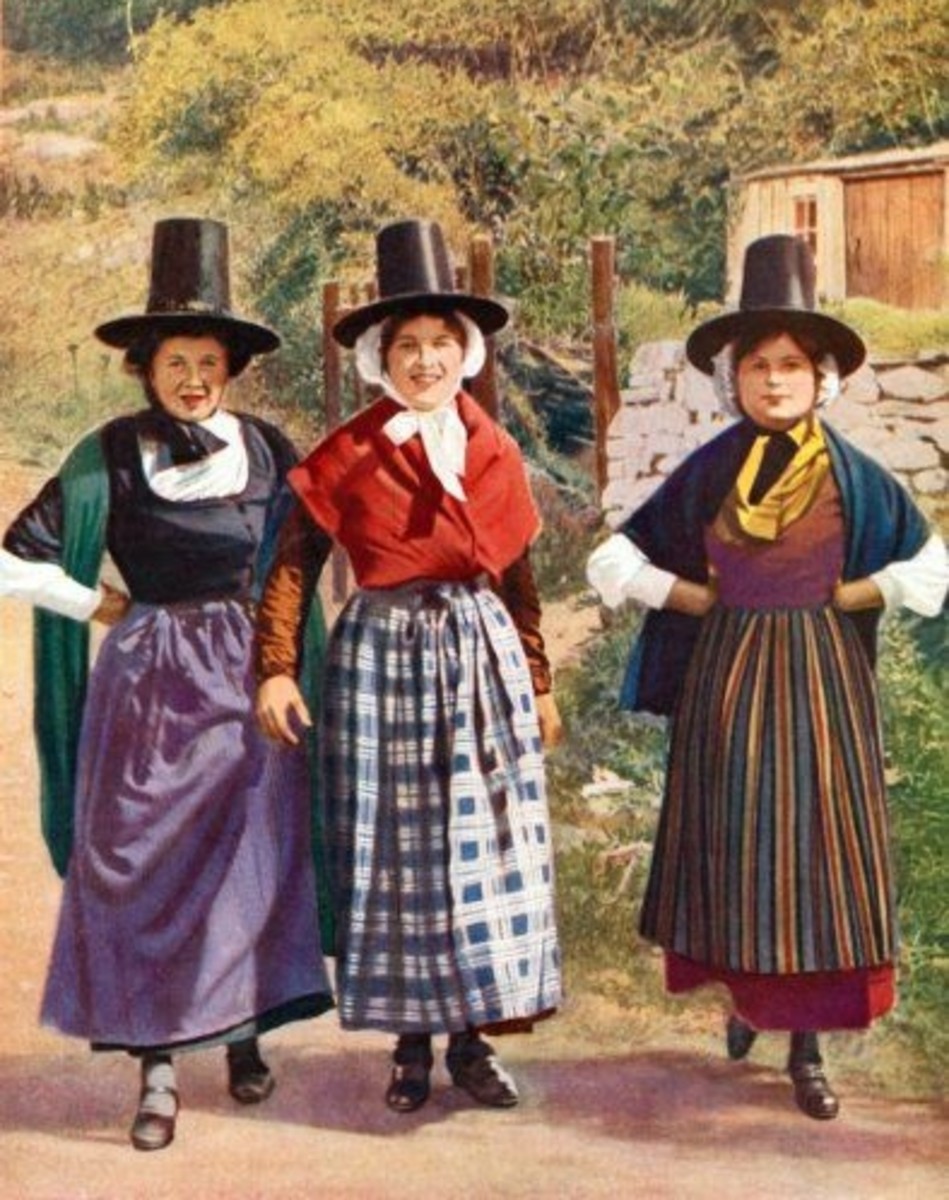
Wales, Traditional Welsh National Dress HubPages
Welsh National costume evolved in Wales in the late 18th century as a development of costume worn in town and country. The popular image of Welsh "national" dress, of a woman in a red cloak and tall black hat, is one which has developed as a result of various influences which arose in the nineteenth century.
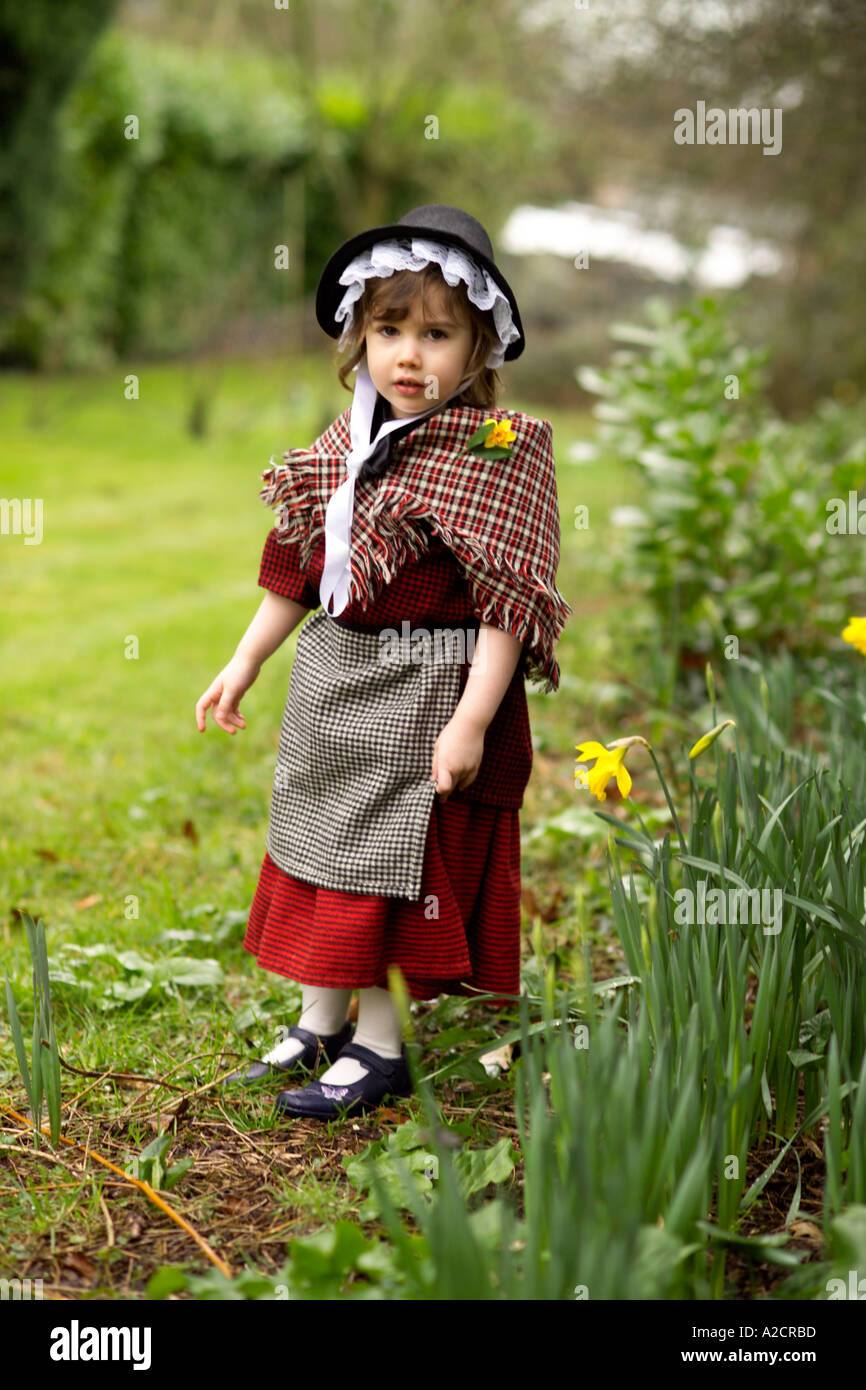
Young Girl in Welsh National Costume Welsh Culture Wales Stock Photo Alamy
The Welsh National Costume is based on the costumes worn by the rural working population of the late eighteenth century. For women this consisted of a gown and petticoat with neckerchief, white cap and hat. Several reasons combined to cause the literary people of the first quarter of the nineteenth century to consider these clothes common.

Pin by Arlene Jakubik on England, Scotland, Wales and Ireland Traditional welsh dress, Welsh
After this past year of reading it seems that the idea of Welsh National dress is a rather recent concept and originated from a desire to retain Welsh identity in a country fast adopting English fashions, culture and language. Lady Llanover, in the 1830's, was instrumental in pushing for the adoption of specific Welsh fashion.

YOUNG GIRL WEARING TRADITIONAL WELSH NATIONAL COSTUME Stock Photo Alamy
3 min read Not many countries can say that their national dress may have saved a nation! The last invasion of Britain took place at Fishguard in Wales in 1797, when French troops successfully landed near Llanwnda.
FolkCostume&Embroidery Costume of Ceredigion or Cardiganshire, Wales or Cymru
What Is the Traditional Welsh Costume? The traditional Welsh costume was worn by Welsh women in the late 18th and early 19th centuries. Its most recognizable element would be the gown as well as the tall hat with the broad, flat brim. However, the traditional Welsh costume has other elements as well.

Pin on Wales
10 products St David's Day Girls 3 Piece Welsh Lady Costume from £24.95 Wales Welsh Flag Buttoned Shirt 1 review £19.99 St David's Day Girls, Welsh Lady Dress - in Red 1 review £19.95 St David's Day Women's 3 Piece Welsh Lady Costume 1 review £28.50 Men's Welsh Flag Wales Kilt £19.99 Sold out Wales Welsh Flag Patriotic Waistcoat £19.99 Sold out

Download this stock image March 1st St David's day a young woman in Welsh National Costume
The History of the Welsh National Costume - or the 'Welsh Lady' On St David's Day in Wales, the tradition is for school children to come to school in the traditional Welsh costume of flannel, hats and of course the daffodil. But what are the origins of the Welsh National dress (in Welsh, Gwisg Gymreig draddodiadol)?
World Costume Dolls THE WELSH COSTUME
The costume is linked with Augusta Hall, Lady Llanover (also known by her bardic name, 'Gwenynen Gwent'). She was an important patron and sponsor of folk culture in Wales during the nineteenth century, especially with regards to music and dance.
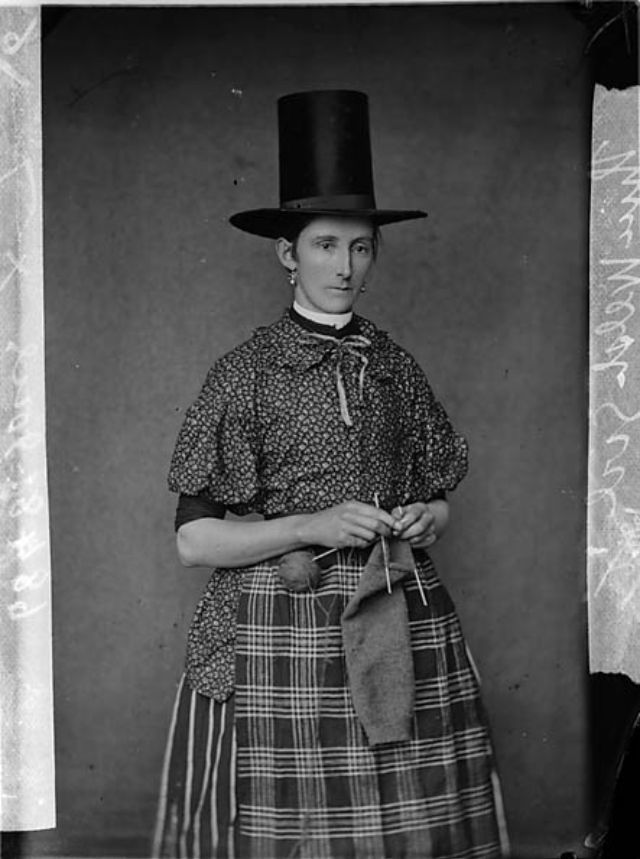
The Tall StovepipeStyle Hat An Indispensable Part of Welsh Women in National Costume From the
A Welsh woman's national costume tends to be a tall black hat, a little like a man's stovepipe hat notably worn by former President of the U.S.A. Abraham Lincoln. A white lacy cap is worn underneath this hat. The costume also includes a full check patterned skirt, a shawl, a white starched apron, black woollen socks, black shoes and a cloak.
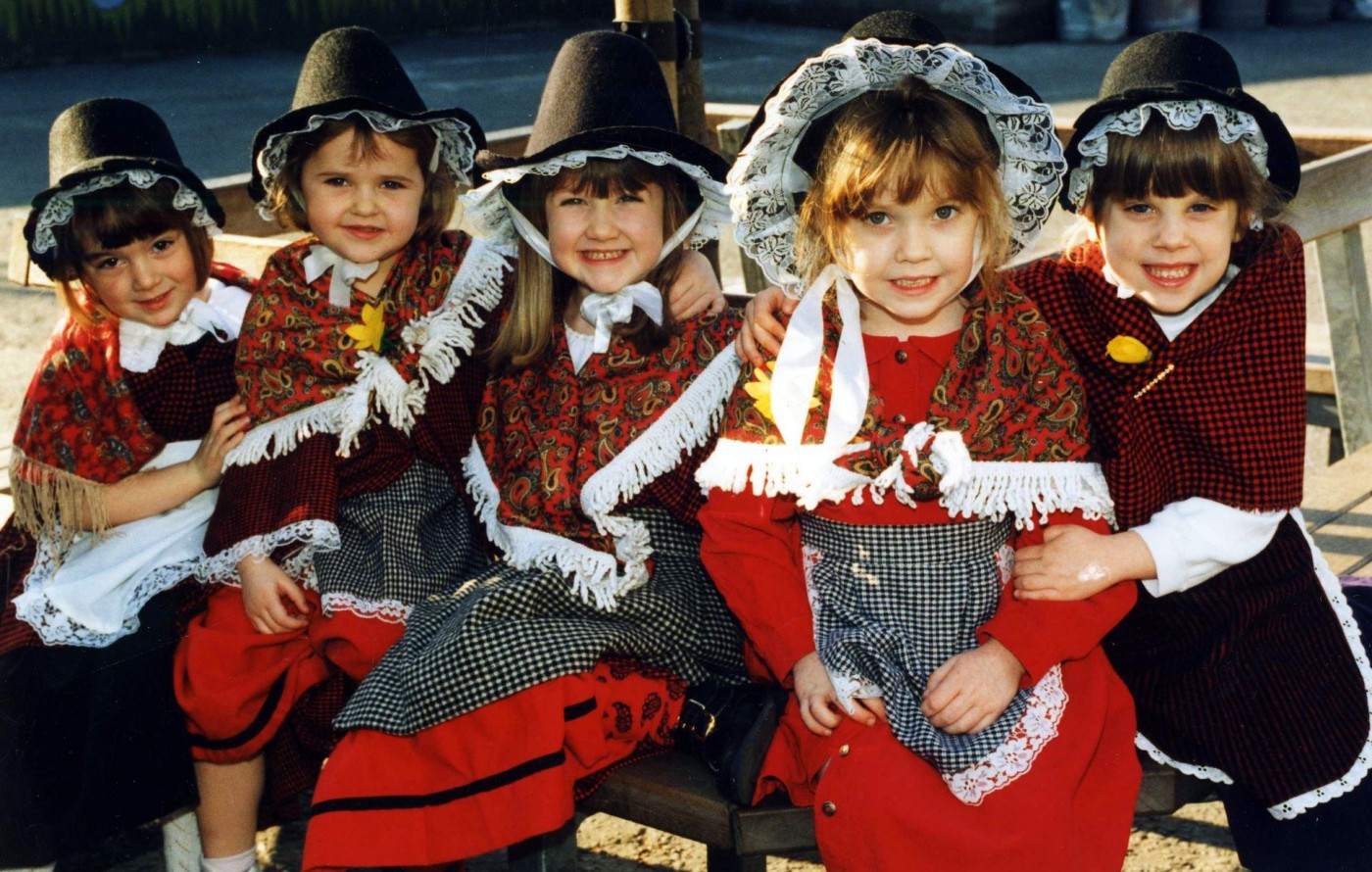
Stovepipe Hats and Bedgowns An Exploration of the Welsh National Costume. The Costume Society
The national costume of Wales is usually thought of as the traditional woman's costume of a red cloak and a tall black hat. This form of the costume was developed in the 19th century, during a revival of Welsh culture, mainly by Lady Llanover. The national dress was based on the clothes worn by Welsh country women in the early nineteenth century.

Wales E1 Postcard Welsh National Costume Dress LAdies TAlking 028 National dress, Womens
The Welsh traditional costume ( Welsh: Gwisg Gymreig draddodiadol) was worn by rural women in Wales. It was identified as being different from that worn by the rural women of England by many of the English visitors who toured Wales during the late 18th and early 19th centuries.